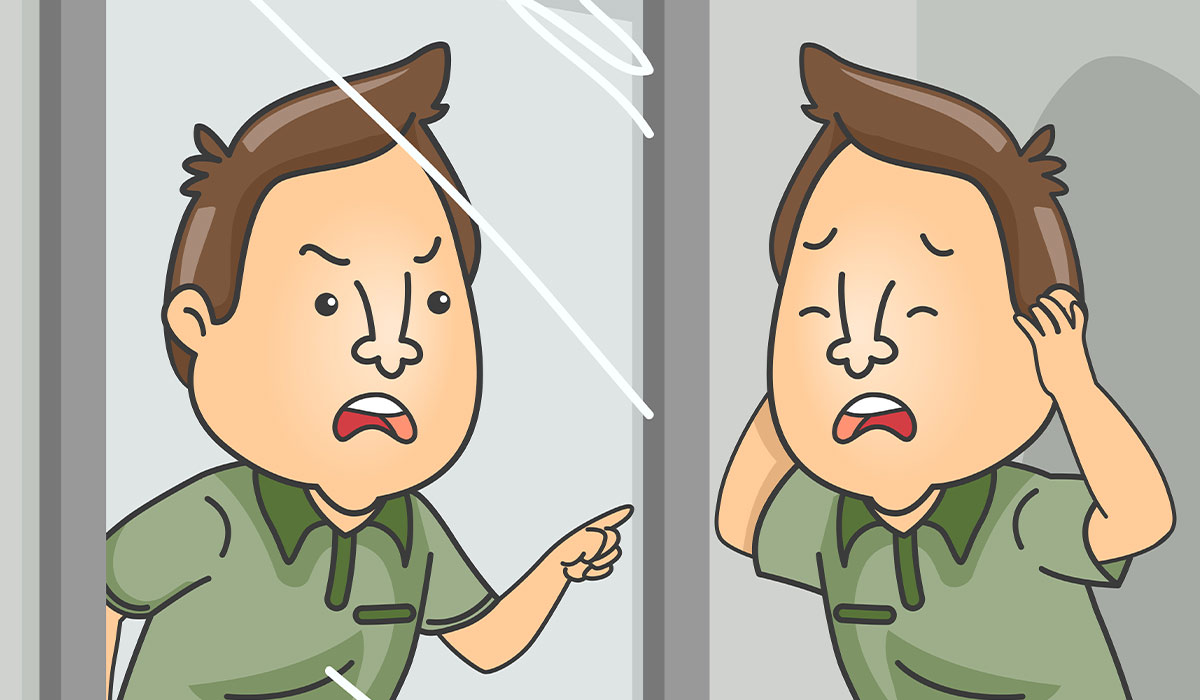ICD-10, also known as the International Classification of Diseases, was designed to simplify the daily tasks of diagnosticians. When doctors provide referrals for tests or prescriptions, they often use a numerical and letter abbreviation, such as E03, R12, or L55, to denote the specific disease corresponding to ICD-10 codes. These codes categorize diseases into subgroups, enabling efficient diagnosis. Each letter in the code serves a specific purpose.

The ICD goal![]() is to promote organized recording, research, interpretation, and comparison of mortality and morbidity information accumulated in different nations or regions over various periods. The specialists use the ICD to register diagnosed conditions and other health issues using an alphanumeric code. The ICD has become the global typical diagnostic classification utilized for all general epidemiological purposes and many other health managing goals. These applications include analyzing the general health situation of population groups, monitoring morbidity, mortality, and other health problems, and analyzing other variables such as patient characteristics and the circumstances of disease onset.
is to promote organized recording, research, interpretation, and comparison of mortality and morbidity information accumulated in different nations or regions over various periods. The specialists use the ICD to register diagnosed conditions and other health issues using an alphanumeric code. The ICD has become the global typical diagnostic classification utilized for all general epidemiological purposes and many other health managing goals. These applications include analyzing the general health situation of population groups, monitoring morbidity, mortality, and other health problems, and analyzing other variables such as patient characteristics and the circumstances of disease onset.
The ICD![]() is not intended to index different clinical conditions, nor is it an appropriate tool for this purpose. There are also limitations to using the ICD in research on financial aspects such as costing and resource allocation. Specialists can use the ICD to categorize conditions and other health issues recorded in various types of medical and demographic data. It was initially designed to classify causes of death as determined at the time of death. The scope of the classification was later extended to include diagnoses of medical conditions.
is not intended to index different clinical conditions, nor is it an appropriate tool for this purpose. There are also limitations to using the ICD in research on financial aspects such as costing and resource allocation. Specialists can use the ICD to categorize conditions and other health issues recorded in various types of medical and demographic data. It was initially designed to classify causes of death as determined at the time of death. The scope of the classification was later extended to include diagnoses of medical conditions.
Although the ICD is primarily intended to classify diseases and injuries for which a formal diagnosis has been made, not every problem or cause of healthcare contact can be categorized this way. Therefore, the ICD includes symptoms, disease features, abnormal test results, complaints, and social situations that may appear in the medical record at the point of diagnosis.
The ICD-10![]() of the classification has been revised and consists of three volumes.
of the classification has been revised and consists of three volumes.
This volume contains the Report of the International Conference on the Tenth Revision, the main three- and four-character classification, the classification of neoplasms, tabulation lists of mortality and morbidity, definitions, and regulations on nomenclature.
This volume contains the notes on jurisprudence and classification previously included in Volume I, together with extensive theoretical foundations and instructions, and tips on using the classification contained in Volume I, using the tables, and planning how to use the ICD classification – this information was missing in earlier revisions. Volume II also contains historical material previously presented in the introduction to Volume I.
This volume contains the alphabetical index with the introduction and extended instructions for use.
The International Classification of Diseases ICD-10 consists of chapters on diseases![]() and health problems, such as:
and health problems, such as:
The ICD-10 classification system allows for the unique alphanumeric coding of each disease. For instance, S56 denotes a forearm muscle and tendon injury, while T45.11 signifies poisoning from antineoplastic antibiotics.
These codes vary in complexity. Shorter codes like E03 typically represent general diseases and disorders, while longer codes provide more detailed diagnoses.
Each version of the ICD translates diagnoses into alphanumeric codes, which provide a common language for globally standardized reporting, monitoring, comparing health conditions, and categorizing injuries, diseases, and causes of death.
This international classification of diseases is of great importance for the health of the entire human population and determines the allocation of resources, such as funding for health initiatives. In nations where ICD codes are the foundation for health insurance billing, e.g., the USA, the ICD is linked to health care finances and provider reimbursements.
In the 1990s, the WHO![]() published and adopted the ICD-10, which became problematic over time due to outdated content. In other words, at a certain point, the ICD-10 was no longer suitable for precise and meaningful classification of diseases. Therefore, moving to a new version of the classification was natural. However, when answering why we need ICD-11, it should be added that the transition to the new classification system was forced by the modifications of the ICD that are used in many countries (e.g., ICD-10-CM, the modification of the ICD used in the United States).
published and adopted the ICD-10, which became problematic over time due to outdated content. In other words, at a certain point, the ICD-10 was no longer suitable for precise and meaningful classification of diseases. Therefore, moving to a new version of the classification was natural. However, when answering why we need ICD-11, it should be added that the transition to the new classification system was forced by the modifications of the ICD that are used in many countries (e.g., ICD-10-CM, the modification of the ICD used in the United States).
Unfortunately, such modifications are inconsistent and limit the comparability of international data, the development of guidelines, and links to knowledge bases. They also cause a deficiency of uniformity in translated phrases. That is why the 11th edition of the ICD had to be introduced to standardize the system internationally.

There are some changes between ICD-10 and ICD-11![]() . The previous ICD-10 classification system operated only in paper form, which meant that only doctors and specialists had access to it.
. The previous ICD-10 classification system operated only in paper form, which meant that only doctors and specialists had access to it.
The ICD-11 system is made available to everyone as a transparent, easy-to-navigate online search engine. Thanks to it, doubts about the diagnosis can be verified by the patient or their family.
Other specialists working with children and young people can also use the online search engine – teachers, pedagogues, therapists, animators, and family assistants. Moreover, free access to ICD-11 makes knowledge about mental difficulties and disorders common and accessible.
The ICD-10 system had a three-character coding formula, in the ICD-11 system four-character symbols function.
The first character corresponds to the chapter number, whereas in chapters 1-9 the first character of the code will describe the chapter number, in chapters 10-27 the first character is a letter. Every code in one chapter starts with an identical character.
Codes have been classified into 26 main chapters and two additional ones (V and X). Codes range from 1A00.00 to ZZ9Z.ZZ. The letter X represents the so-called extension codes, i.e., further essential details about the condition.
Another change will include various circumstances affecting a person's health.
When describing a disease, specialists take into account factors such as:
Thanks to this, the ICD-11 system allows for describing a person's health from a broad perspective, taking into account various circumstances and thus reducing the risk of stigmatization.
Chapter 6 of ICD-11: Mental, behavioral, and neurodevelopmental disorders, classifies mental disorders. It is compatible with the American DSM–V.
Unlike ICD-10, in the ICD-11 system, in Chapter 6 Mental, behavioral and neurodevelopmental disorders, seven groups of disorders are distinguished, arranged as follows:

The ICD-11 classification no longer distinguishes disorders such as Asperger's syndrome. The concept of autism is also disappearing, and the autism spectrum is rising.
The distinguished subcategories of disorders are described in a way that characterizes the functioning of a given person and what difficulties dominate the picture of the patient's functioning. Attention is drawn to whether there are:
According to ICD-11, spectrum symptoms may only appear when social demands exceed limited possibilities and induce impairment in personal, family, social, educational, professional, or other significant places of functioning. People across the spectrum demonstrate the full range of intellectual functioning and language abilities.
The concept of ADHD has also disappeared from ICD-11.
In the new system, the names of the subcategories refer to the main difficulties that dominate the clinical picture of the disorder, such as:
The new description of the disorders is more functional, less stigmatizing, and limiting, and allows for a better understanding of the patient and, as a result, offering them adequate help.
ICD-11 also reduces the risk of exclusion, social isolation, or reinforcing stereotypes. The definition of disorders refers to a set of features, some of which are characteristic of a given person.
It is also worth noting that the word affective has disappeared from the ICD-11 system in the category of mood disorders.
CHAD, or bipolar affective disorder, is currently listed under the name of bipolar disorder, and the symptoms of Manic and hypomanic episodes are seen as part of the course of bipolar disorder. There are no longer independent episodes of mania or hypomania.
The ICD-11 system also introduces several new categories:
In the ICD-10, these disorders could be found under behavioral and emotional disorders, with beginning usually appearing in preadolescence and adolescence. However, in the ICD-11, they are linked to a stress factor.
ICD-11 was changed compared to its predecessor. It now has a database structure, and the changes include making it more IT-friendly, better able to support the collection of morbidity data, and reducing the cost of treatment.
However, ICD-11 also introduced several additions and modifications, including:
Furthermore, several changes have been implemented to enhance the ICD-11 code data potentially. These changes include adding extensions or non-diagnostic codes, which increase the flexibility of the classification. They cannot be used independently but should be added to the parent code, replacing the additional ICD-10 codes.
ICD-11 has also implemented so-called cluster coding, which combines two or more codes to describe a documented clinical concept. Such codes are then coordinated to describe a single condition. When a diagnostic statement is divided into its parts for simplicity, grouping enables them to be associated in a coded record.
Table of Contents

DSM-5, or the Diagnostic and Statistical Manual of Mental Disorders, is a comprehensive classification and diagnostic tool published by APA. read more »

Misophonia is an inappropriately strong reaction to specific sounds. It occurs in many disorders. Learn about the meaning of misophonia… read more »

Dissociative identity disorder Ii is characterized by the presence of at least two independent and different personalities in one person.… read more »

Antisocial personality disorders are mental dysfunctions that result in abnormal behavior of the individual. What are the typical behaviors? read more »

The main symptom of golfer's elbow is severe pain in the elbow area. Find out how to get rid of… read more »

Sleep paralysis is a condition in which you experience a feeling of inertia of the entire body. What are the… read more »

Delirium is an acute disorder of consciousness most often characterized by illusions, hallucinations and agitation. What are the causes of… read more »

Bulimia is an eating disorder characterized by binge eating followed by compensatory behaviors. What are its causes? How to treat… read more »

Do you know why Asperger's Syndrome is no longer diagnosed? The diagnostic criteria for many mental disorders were updated. Learn… read more »